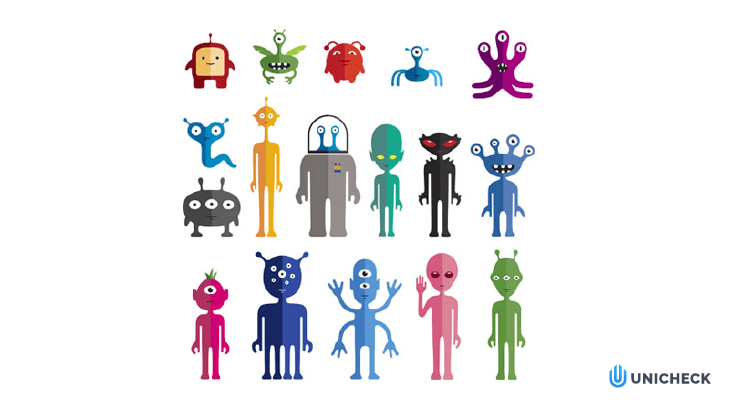Knowing who we are is what gives us a sense of purpose. Career is one-way how this purpose is expressed and college is one way we prepare for a career. In order to succeed in college students have to be open to take in new information but their performance will also depend on their personal learning patterns.
According to Myers Briggs learning styles we all have inborn learning preferences. When students don’t understand the lesson teachers can help them to grasp the material in their own way using research-based framework that is suggested by MBTI test.
Now educators all around the world use the test as the basis for developing better educational strategies that help to satisfy individual learning needs of each student. According to the methodology, each letter stands for the particular trait:
(E) – Extrovert. Strives to organise the outer world and things.
(I) – Introvert. Organises the inner world in concepts and notions.
(S) – Sensing. Uses facts to operate.
(N) – Intuition. Uses the power of imagination.
(T) – Thinking. Makes the decisions based on logic.
(F) – Feeling. Uses personal values and feelings for making choices.
(P) – Perceiving. Wants to be flexible, adaptable and open to changes.
(J) – Judging. Decides critically and is comfortable with everything being planned.
The following types describe the learning habits and preferences of students and how they can be used in order to make studying more productive.
ESTJ – The executives
Defining phrase – “Will this solve a problem?”. The greater will be their interest the quicker they will plunge into theory implementation. Give these students something practical to make and they will be happy, give them the opportunity to learn from the videos and tutorials and they will be happier.
How to help them learn? Give them DIY and practical courseworks, involve them in the class debates, deliver the material in a logical manner, apply video materials.
ISTJ – The logisticians
Defining phrase – “Is this useful to me?” The more they understand how to apply the theory or conception in the real life and how they could benefit from it, the more their interest grows.
They strive to apply the knowledge and learn from the material that is logically structured just like ESTJ’s but they tend to dosage and distribute the learning to ensure everything is in order.
How to help them learn? Organize the students in teams, give them a space for the collaboration, practical projects, make their studying systematic and don’t give them overly theoretical tasks.
ENTJ – The commanders
Defining phrase – “Will this help me solve a problem?”. Their brains are wired towards solving problems with robust practical solutions. They filter the information on important and unimportant, logical and illogical leaving only the bits that will help them to grasp the pillar concepts so they learn very quickly and energetically.
How to help them learn? Give the material with relations between the events, facts, and consequences, give them the opportunity to work in the team and help others in the group, let them participate and start the debates and brainstorming.
INTJ – The architects
Defining phrase – “Why is this so?” These learners are always looking for the reason behind events. They look for the ideas that can solve various problems and they find them by making a profound and logical research. When they study the new information they look for the theoretical connections like ENTJ’s.
How to help them learn? INTJ’s are massive visual learners so giving them visual information is a good practice, give them complex concepts to work on and tasks that have historical contexts in them.
ESTP – The entrepreneurs
Defining phrase – “Can I become more effective by learning this?”. Again, practical solution finders! ESTP learning type is directed towards solution finding. Fast learner by nature ESTP prefers to stay within a logical framework and is able to memorize the even tiny details.
How to help them learn? Let them learn from examples, practical tasks, assign them to the group work, let them learn from participating in debates and active learning.
ISTP- The virtuosos
Defining phrase – “How does this work?”. These students have tech minds that constantly look for devices and systems to operate and improve. The practical side of them demands real-life examples and solutions to understand everything in details.
How to help them learn? Give them projects that demand practical implementation, educate them with examples, teach them gradually and preferably with a presentation of how this or that system works.
ENTP – The debaters
Defining phrase – “What are the ways to solve this problem?”. The more ways to sort out the problems they find the better is their material grasp. Complex, challenging tasks motivate them, they try to look at the task from different angles using logical approach and analysis.
How to help them learn? The task should be built on the conceptual basis, it should be built logically and appear as enough challenging, give them tasks that have more than just one way of solving the problem, link the material to the application
INTP – The logicians
Defining phrase -“What is the structure of problem?“. Like ENTP’s they get motivated more when they are able to find the multiple ideas for the problem-solving but the teamwork makes them less productive. Solving the problem they look for all possible causes, interrelations, and factors to analyze them.
How to help them learn? The material can be theoretical and complex, assign them with individual readings and tasks, give them the idea-provoking problems that have several solutions.
ESFJ – The consuls
Defining phrase – “Will this help me in work with others?”. These students are learned better when the material is rather people-oriented than strictly theoretical. They don’t need the information to be logical in order to grasp it, they memorize the details and better learned when their emotions are involved.
How to help them learn? Engage them in active learning, learning games and contests, give them a space for the collaboration and debates, provide the tasks with multiple solutions.
ISFJ – The defenders
Defining phrase -“How it will help me in work?”. The retention of material is better in case they understand how the learnt material can be used in practice.They are able to mechanical memorization and work better when their learning is systematic.
How to help them learn? The material should have a practical implementation and be connected with people, based on examples of others, also it should contain facts and details.
ENFJ – The protagonists
Defining phrase – “How is this good for people?”. Active and engaged learners in case the material shows how humanity can benefit from it. It is also important for them to understand the connections and relevance, the new material is learned in depth and quickly.
How to help them learn? The active form of learning is highly recommended, let them participate in debates and contests, provide examples, visual materials, choose the topics that are highly popular and human-related.
INFJ – The advocates
Defining phrase – “Will it be useful for people?”. They are motivated by the possibility to solve the problems of humanity, pushing the boundaries of the area and relying on their hunches and emotions. Usually, they work independently and prefer theoretical tasks.
How to help them learn? Feature visual information, – pictures and videos, assign the tasks in social sciences, assign them in groups for the collaborative learning and provide them with complex concepts to work on.
ESFP – The entertainers
Defining phrase – “Will I enjoy this?”. They quickly understand the new material in case when they see the application for it, especially if the application will somehow amuse people. These learners like to actively communicate during studying process, able to memorize a lot of information even without logical flow.
How to help them learn? These students are visual learners, provide the information via examples, involve them in educational games, debates, give them tasks that demand artistic approach.
ISFP – The adventurers
Defining phrase – “I need it if it’s beautiful”. If the given material is liked from the aesthetic point of view they are very excited learners. The logical flow of things is not necessary, they are able of mechanical memorization and enjoy a number of ways that help them study especially visuals.
How to help them learn? Assign them tasks that require an aesthetic analysis, provide them with lecture materials, engage them by information that appeals to emotions and set the encouragement measures that approves the good work.
ENFP – The campaigners
Defining phrase – “Will people enjoy this?”. People-related questions make them tick. They are motivated by the opportunity to be useful for people and appreciated by them. The logical connections are not important for learning due to the ability to absorb big amounts of data that relates to their feeling.
How to help them learn? Implement the active forms of learning like debates, games, and contests, give them tasks that demand creativity, present the subject in the different viewpoints.
INFP – The mediators
Defining phrase – “Is it a right thing to do?”. Another type that is deeply concerned about human problems, enchanted by the explanatory information considering human behavior. Their memory based on understanding the purpose and memorizing from visuals, not on the strictly theoretical notions.
How to help them learn? Use visual materials as it will significantly improve the retention, give the tasks related to the social sciences and tasks that demand several viewpoints on the same fact.
To sum up
Myers Briggs learning styles suggest that our personality traits affect the way we learn, retain and recollect information in everyday life. These inborn patterns also define motivation and resilience while studying in college or school.
The correct educational environment along with individual assignment formats can ease the process of understanding and help the students who experience difficulties learning particular subjects.



